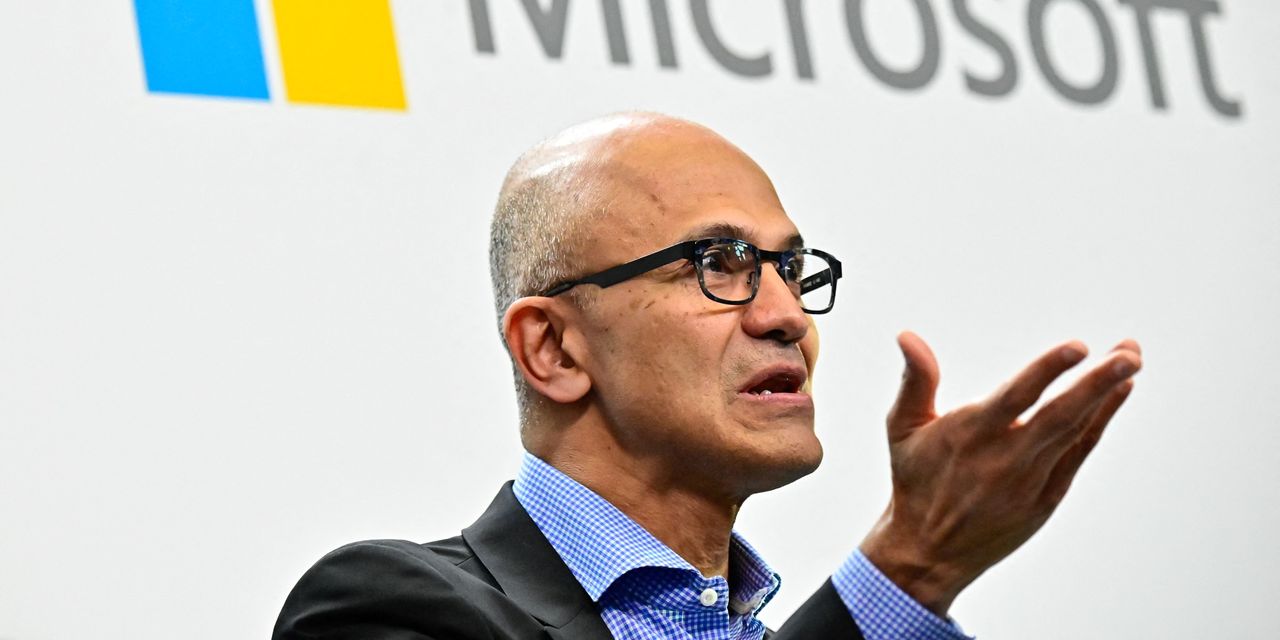Microsoft Corp.’s
move to combine the roles of its chief executive and chairman goes against recent governance trends.
The Redmond, Wash.-based software company said Wednesday that Chief Executive
Satya Nadella
would also assume the role of company chairman.
John W. Thompson,
who preceded Mr. Nadella as chairman, returned to his role as the lead independent director, a title he held from 2012 to 2014.
Microsoft’s decision comes as more U.S. companies have separated the CEO and chairman positions in recent years, following a push by corporate-governance experts, shareholders and, in some cases, regulators to untangle the two roles.
About 59% of S&P 500 companies now have separate CEO and chairman positions, according to data compiled for The Wall Street Journal by ISS ESG, a unit of proxy adviser Institutional Shareholder Services Inc. That is an increase from 55% in 2020 and 37% in 2011.
A Microsoft spokesman said Wednesday that Mr. Nadella and Mr. Thompson had been in talks since late 2020 about potentially combining the roles and the change was unrelated to co-founder
Bill Gates’s
departure from the company’s board last year. Mr. Gates announced last year that he was stepping down three months after having been re-elected to the board.
“Microsoft and its board have a longstanding commitment to strong corporate governance and shareholder protections,” a company spokesman said Thursday. “With 10 of 11 board members independent, and an experienced lead independent director, the board remains positioned to provide effective oversight and strategic direction to the company.”
Mr. Nadella will take the lead in setting the agenda for the board and use his knowledge as the CEO to identify key risks, the company said Wednesday. Mr. Thompson will provide input on board agendas, call meetings of the independent directors, set agendas for the executive sessions and lead performance evaluations of the CEO, the company said.
The last time the two positions were held by the same person was by Mr. Gates in 2000, the spokesman said.
“It’s a bad move,” said
Charles Elson,
a professor of corporate governance at the University of Delaware. “The person being monitored by the board, the CEO, shouldn’t chair the board that monitors them.”
The move would enhance management control of the board, where the chairman controls the agenda and flow of the meetings, Mr. Elson said. He added that it would be difficult to strip a CEO of the chairman role once the positions have been combined.
A change to combine the roles is a source of concern, said
Nell Minow,
vice chair of ValueEdge Advisors, which advises institutional investors on corporate governance issues. “It’s always a bit of a red flag when the CEO doesn’t think the title of the CEO is enough,” she said.
While combining the two titles might not be as meaningful if the board has a strong independent lead director who sets the agenda, companies should explain why a combination is necessary and how the board would provide independent oversight, according to Ms. Minow. How a board handles a CEO’s compensation and whether it takes the lead on environmental, social and governance issues can indicate how adequate its oversight is.
“It’s not the titles that concern me so much, it’s how they are interpreted by the board,” she said.
Write to Mengqi Sun at mengqi.sun@wsj.com
Copyright ©2020 Dow Jones & Company, Inc. All Rights Reserved. 87990cbe856818d5eddac44c7b1cdeb8


